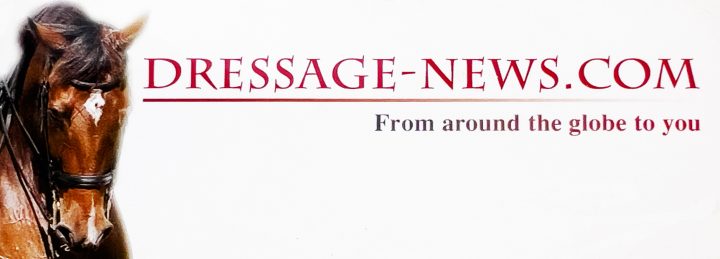USA Young Horse Program Next Steps — Part 2 of 3
13 years ago StraightArrow Comments Off on USA Young Horse Program Next Steps — Part 2 of 3

By KENNETH J. BRADDICK
Scott Hassler, signed up for three more years as coach of the United States young horse program, predicts a “big turn worldwide” in development as more successful youngsters move to the top international levels of the sport.
After years of being key in building the U.S. program to its current sucess, the 44-year-old American trainer has set new goals for his tenure through 2014.
He will seek to add some elements that “mean a lot to me”:
–“I want to give a chance to younger talented riders. I don’t mean younger in age, I mean the they’re not known, not ‘made in the press’ riders, a talented rider who has come from somewhere that may not be one of what we see as the centers of dressage. That’s one addiction I have.”
-“To continually see the young horses that come through this program go through to the upper levels.”
–“To see more respect for the program.”
But the highest priority is to insure that the program “needs to be fun. This is just another step in their careers. It’s not about the politics, or who you are. It’s truly a fun game.”
For Scott, married to top dressage trainer and competitor, Suzanne, the father of two daughters and who trained in Germany with the late great Herbert Reihbein, one of his first moves was to challenge American breeders to get more involved.
“Something that disappoints me,” he said. “Here is our national championships for young horses.
“Where are the breeders?
“They have this incredible passion, but they have to know what they’re breeding for, to watch it and feel it and see it. It makes you elevate your whole game. I’d love to see more breeders here.
“OK, there are only 15 horses per class, It’s not like Germany where there are 65 horses per class. But it is good quality and you are seeing good combinations. With the way of the world with live streaming you can watch it without the cost of traveling.
“Still in the end, seeing the riders, meeting the riders, feeling the atmosphere, all that stuff, I would love to see more breeders engaged.”
Addressing one issue that was criticized by many riders and owners at this year’s young and developing horse competition at the beautiful Lamplight Equestrian Center in Wayne, Illinois, was the absence of a giant scoreboard and other trappings of a national championships. Horses and riders were shipped in from all across the nation at considerable personal expense–2,000 miles (3,200km) from Seattle or Los Angeles, 1,300 miles (2,100km) from South Florida.
“I would love to see more people here,” he said, “more atmosphere.
“I think at the end of the day it’s important that people leave this championship and say, ‘Wow, that was great!’
“I agree that pople travel so far and this has been an important goal they should get here and really feel like they are champions and we create a special atmosphere. Even with the economy the way it is, there is no excuse. They should always feel like they are at a championship.”
Scott predicts “there is going to a HUGE transition–HUGE” in dressage as a whole as a result of young horse development.
“I think there is going to be a big turn worldwide,” he said. “There’s always been a little bit of… not negative but… the connotation when they say, ‘Oh, these young horse classes–they have these fancy gaits but we’re not going to see these horses at Grand Prix.’
“It’s an absolute fact now that that time is over.
“At the world breeding championships in Verden, there’s now been a study that shows that 80 per cent of the horse that competed there are now at FEI level.

“So there’s no more, ‘here’s these world championship young horses and we’ll never see them again.’
“That’s a bunch of baloney now. It is successful and I think there is going to be a huge transition.
“There is going to be pressure on the professionals. I think this game is it for a long time and that’s going to bring respect. I think more and more people are going to become engaged.
“We have to be careful, though, that we make it an inviting game to play, and a fun game to play–not a critical game to play.
“That’s where I will always take a stand for this program that it becomes a fun game to play with your horse.
“Ii’s supposed to be positive. You’re supposed to get feed back and you move on.
“Let’s make sure it doesn’t become critical, it doesn’t become negative. Let’s make sure you’re not taught how to ride this horse. This is a platform to showcase your horse and you get a great feeling from it and you walk away, saying: ‘Cool. This is really fun. I want to do it again’.”
Next – Part 3 – USA at the world championships

